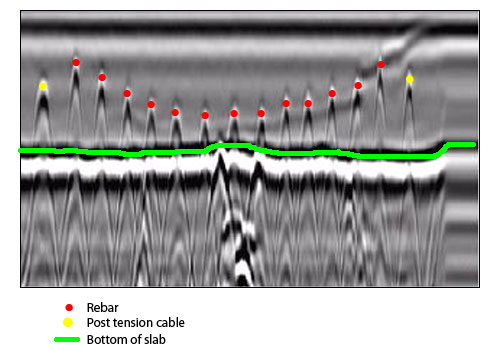Concrete Scanning: Your Guard Versus Unforeseen Obstacles in Building Projects
In the world of building, unanticipated difficulties can often disrupt timelines, budgets, and safety and security methods. Nonetheless, with the advancement of concrete scanning innovations, the capability to anticipate and reduce potential barriers has actually ended up being a critical facet of task planning and execution. By harnessing the power of sophisticated scanning methods, construction specialists can proactively determine covert hazards under the surface area, making sure a smoother and much more efficient project shipment. As we explore the significance of concrete scanning as a safety shield against unpredicted challenges in construction tasks, a deeper understanding of its applications and advantages emerges, clarifying the transformative effect it can carry the market as a whole.
Value of Concrete Scanning
Concrete scanning plays an important duty in guaranteeing the security and honesty of construction jobs. By making use of advanced innovations such as ground-penetrating radar (GPR) and electro-magnetic induction, construction teams can precisely situate rebar, post-tension cables, channels, and other possible blockages within concrete frameworks. This process is vital for protecting against costly damages, guaranteeing architectural stability, and preserving job timelines.
Among the main reasons that concrete scanning is so vital is its ability to reduce risks during the building phase. By determining concealed threats under the surface area, such as gaps or shabby areas within the concrete, specialists can proactively attend to these problems prior to they intensify into more significant problems. This proactive approach not only boosts employee safety and security yet likewise lessens the probability of building delays and budget overruns.
Moreover, concrete scanning enables building and construction groups to make enlightened choices based on accurate data. By having a clear understanding of the subsurface problems, task managers can plan excavation, drilling, or cutting tasks extra effectively, decreasing the capacity for unexpected damages to essential structural aspects. Eventually, buying concrete scanning solutions is a positive step that can save building and construction firms time, money, and reputation in the future.
Advanced Technologies for Discovery

Another cutting-edge innovation is Electromagnetic Induction (EMI), which detects non-metallic and metal things below ground by inducing electro-magnetic areas. Furthermore, Acoustic Pulse Mirror (APE) technology utilizes audio waves to analyze the problem of concrete structures and discover delaminations, fractures, or voids.
Moreover, improvements in infrared thermography have allowed the detection of dampness seepage and insulation voids within concrete structures. This innovation aids in stopping future deterioration and guaranteeing the durability of buildings. By including these innovative technologies right into concrete scanning methods, construction jobs can alleviate dangers and boost total job results.
Benefits of Proactive Scanning
Carrying out proactive scanning techniques in construction jobs boosts the early discovery of prospective subsurface obstacles, leading to enhanced task efficiency and price financial savings. By using concrete scanning modern technologies such as ground-penetrating radar (GPR) and electromagnetic induction, construction teams can recognize hidden risks prior to they escalate into pricey concerns.
By recognizing possible challenges early on, building and construction crews can take precautionary procedures to reduce dangers and make sure a more secure working environment for all included. Generally, the proactive method to concrete scanning not just saves time and cash yet additionally improves the total top quality and success of construction jobs.
Enhancing Job Efficiency
To optimize construction task end results, the positive scanning techniques employed not only boost safety yet also play a critical function in enhancing overall job efficiency. By conducting comprehensive concrete scanning prior to commencing any type of building activities, potential obstacles and go to the website risks beneath the surface can be recognized and mitigated beforehand. This aggressive approach decreases the probability of costly delays, revamp, and accidents, thus simplifying the task timeline and budget plan.
Enhancing task efficiency via concrete scanning involves utilizing innovative technologies like Ground Permeating Radar (GPR) and 3D imaging to properly draw up subsurface attributes and utilities. This thorough information allows construction groups to prepare their tasks extra properly, staying clear of encounter existing utilities or frameworks, enhancing resource allowance, and reducing downtime. Additionally, by preemptively resolving any underground complexities, the building process can proceed efficiently, with less disruptions and unanticipated obstacles. Ultimately, the combination view publisher site of concrete scanning right into construction tasks not just makes sure safety and security and compliance however additionally increases performance and task performance.
Ensuring Safety And Security On-Site
Safety and security on building sites is extremely important to the success of any type of task. Ensuring safety and security on-site calls for a detailed strategy that entails proactive measures to stop crashes and minimize risks. One of the essential elements of promoting security is supplying adequate training to all employees associated with the job. Training must cover correct handling of equipment, adherence to safety protocols, and emergency situation treatments. Regular safety and security examinations and audits must likewise be carried out to determine prospective dangers and address them promptly.
Applying clear communication networks for reporting safety issues is essential for producing a safe workplace. Motivating a safety-first culture where workers really feel encouraged to speak out about possible threats can help prevent accidents before they occur. Additionally, giving personal protective equipment (PPE) and applying its use is important in guarding employees from harm.
Conclusion

By including these sophisticated innovations into concrete scanning techniques, building and construction jobs can mitigate threats and improve total project end results.

In verdict, concrete scanning plays an important function in building tasks by identifying unforeseen obstacles that might possibly hinder development and compromise safety on-site. GPR Concrete Scanning Bellevue.